Types of Toilet Flush Systems, Mechanisms & the Best Designs
A flush toilet is a toilet that disposes of human waste from the bowl by using the force of water to flush it through a drainpipe to either a septic or sewer system. There are quite a number of toilet flush systems with varying flushing mechanisms and designs.
The different types of flush systems include; gravity washdown flush, siphon jet flush, vacuum/pressure-assisted, double cyclone, rear toilet flush, dual flush, single-flush, flapper-flush valve and the tornado.
The main flushing mechanisms include the gravity-powered with water and vacuum/pressurized versions that utilize air and water.
In terms of design, some flush systems feature tanks with single/dual pushbuttons, handles/levers, curved trapways, skirted bowl base, tower styles, others have small tanks, others have large tanks, etc.
If you are shopping for a new flush toilet, an easy-to-use and maintain, a fairly-priced system that conserves water and other natural resources is what you should consider. Below, read more about the various flush systems, how they work plus the pros and cons of each.
Gravity Washdown Flush Toilet System
Washdown flush systems are the oldest and most basic designs of all the systems. This system utilizes the weight and the gravitational current of the water to push waste from the toilet bowl into the trapway.
Most flushing systems in the market today are modified or improved versions of this system.
Some features of washdown toilet flush systems include;
- Has push-button flush to initiate a flush instead of a standard lever flush
- Skirted design
- Large waste hole as a result of wide trapway
- Short/wide trapway
- Smaller water surface area
- Some washdown toilets come with dual flush push button which can be used to be water-efficient
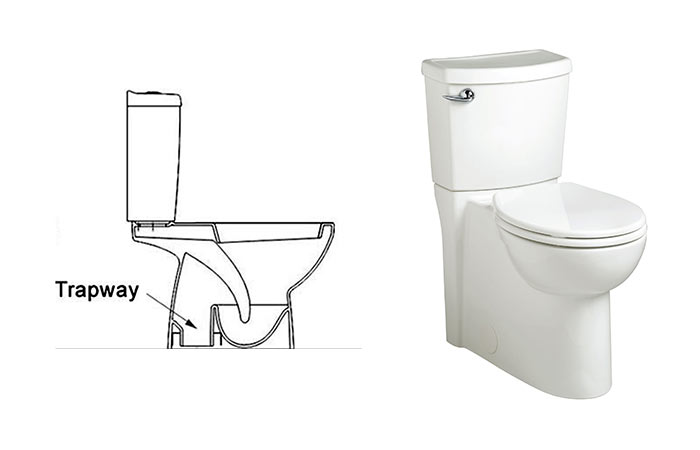
How it works
Washdown toilet uses a simple mechanism. When you initiate the flush, the sheer volume of water rushing into the bowl forces anything and everything down the drain.
Pros
- It is clog free because of its short and wide trapway.
- It is efficient in waste removal.
- Washdown toilets are cheap to purchase.
- Dual versions can save water.
Cons
- Washdown toilet system is not great at cleansing the bowl.
- This system is prone to odors because the wastes are not fully submerged in water.
- It has a loud and noisy flush.
- It requires two or three flushes for heavy waste thus consuming a lot of water.
- Sometimes it causes skid marks on the bowl.
- Prone to sweating
Siphon Flush
This is by far one of the most popular flushing systems in many households today. It is basically a modified version of the gravity washdown. In addition to the gravitational flow of water, it has a curved trapway that creates more pressure for the flush.
A distinguishing feature of the siphonic flush system is the S-shaped trap way that has one end connecting to the sewer system and the other to the bowl.
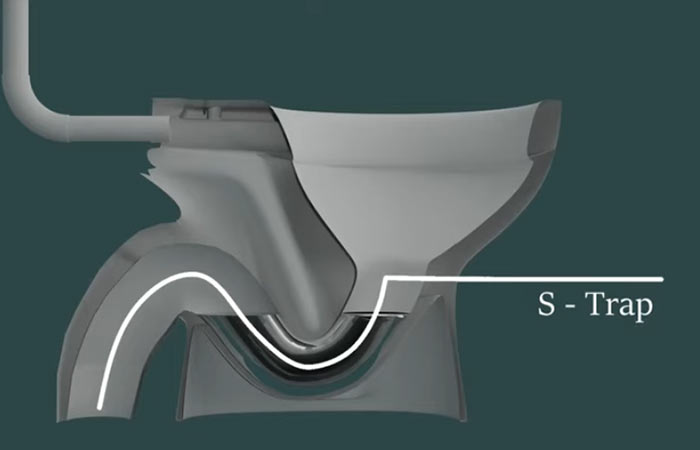
It also creates inside the remainder of the tube, which is filled with air.
This trap way design creates a partial vacuum filled with air that helps to suck waste matter down the drainpipes. The design also prevents sewer gases from wafting into the bathroom. Water in the lower section of a siphon acts as a valve to stop sewer gases from escaping.
In addition to trap way, siphonic jet toilets have a large water surface, and their water levels always stay above the bowl outlet.
When you initiate the flush by pressing the lever, water flows from the tank into the bowl via gravity. The tank releases water at a faster rate than it can exit the bowl. Water enters the bowl through the siphon jet and through smaller holes in the bowl’s rim.
The water in the bowl first rises before it subsides rapidly. As the water flows out of the bowl, it displaces the air in the trap way. This displacement makes a vacuum that siphons the waste down to the drainpipes. A gurgling sound shows that the siphon/vacuum has been broken.
Pros
- This flush system produces less noise.
- They do not have odors because of the high water level.
- It cleanses the bowl and has a powerful flush especially for home use
- Easy to use and maintain
- Cheaper than other flush systems
Cons
- Siphon flush system is prone to clogs.
- Weaker flush compared to other flush systems
- Prone to sweating
Pressure Assisted-System
Unlike most flush systems which solely depend on gravity force, the pressure-assisted system utilizes a combination of gravity-driven water and pressurized air that generates a powerful flush. Due to its powerful flush, it is often found on commercial premises.
These units normally have a pressure tank inside the main tank that usually works like a big water balloon. Here, water normally fills the tank, and then it is held there under pressure.
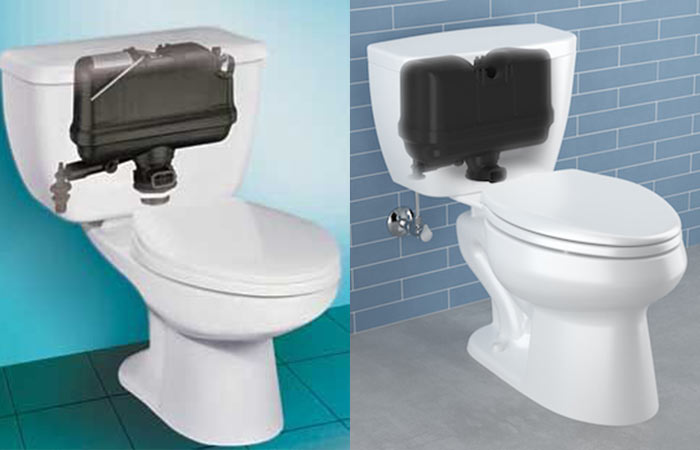
When you flush the toilet, the flush valves toilet opens and an explosive rush is caused by pressure. This system uses less water but completely flushes the toilet.
In addition to the powerful flush, it is less prone to sweating and the best choice for commercial settings. On the other hand, it is quite noisy, and costly to acquire and install
Further reading: Pressure-assisted Toilet: What it is, How it Works, Common Problems & the Best in the Market
Dual Flush System
A dual flush system is an improvement of the gravity-powered systems. It is designed to handle solid waste and liquid waste separately. There are dual systems that have two buttons; one for solids and the other for liquids. Others have only one button where you press on either side depending on the waste.
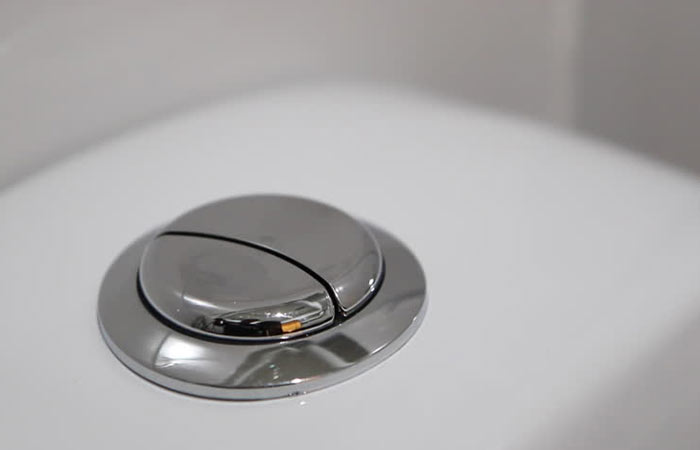
The dual system works by controlling the amount of water that is released into the bowl. Solids require much water to be pushed down the trapway to ensure that there is no clogging in the bowl. For liquids, only a small amount of water is needed.
A full flush, used for solids, consumes a gallon and a half of water while a partial flush for liquids consumes less than a gallon.
Pros
- This system is cheap to use since it minimizes the water used.
- It is friendly to the environment as it ensures that water is conserved.
- The dual flush is stylish and attractive compared to the single flush system.
Cons
- The flush buttons are prone to getting stuck. Sometimes you could push the flush button and it does not come back up.
- A defective flush valve could lead to constant running of the toilet thus wasting a lot of water.
Further Reading:
Vacuum-assist Flush System
This flush system has a vacuum tank that is connected to the trapway. When flushed, the vacuum tank creates suction and helps suck the waste out of the toilet and through the trapway.
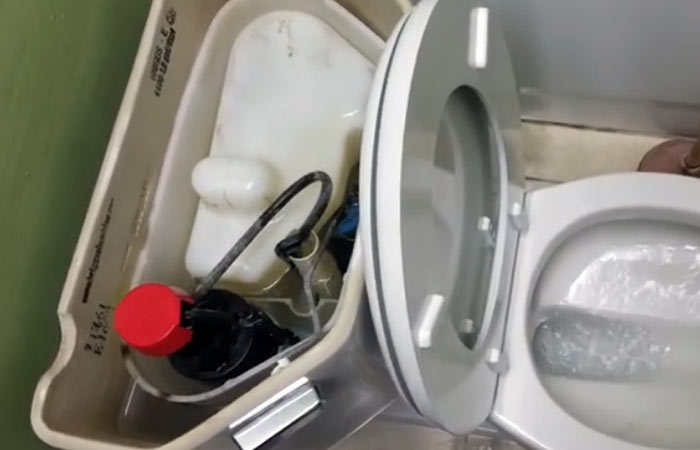
Vacuum-assist toilets are typically more expensive than gravity-flush toilets. Their flushing power is as strong as that of pressure-assisted systems. While the price of pressure and vacuum-assist toilets does not vary a lot vacuum systems are usually quieter than pressure-assisted toilets.
Class Five Flushing Technology System
A technology created by Kohler, class five is a type of flushing system is designed for extraordinary bulk flushing performance. It can remove up to 1000 grams of solid waste with a single flush.
It features a large (3.25) flush valve which allows rapid release of water in 360 degrees combined with a direct fed jet and maximizes water flow.
Pros
- Powerful flush
- Conserves water
- Eliminates common leakage problems
- No sweating
- No clogs
Cons
- Small trapway
- Models without coating require more rinse at the back of the bowl.
- Some models are louder
Double Cyclone System
First introduced by Toto, the double cyclone system has two nozzles which are placed at the top of the bowl facing sideways. These nozzles are backed up by a propulsion system that allows more water to flow through the tube. It also produces a powerful siphoning action for a more efficient flush.
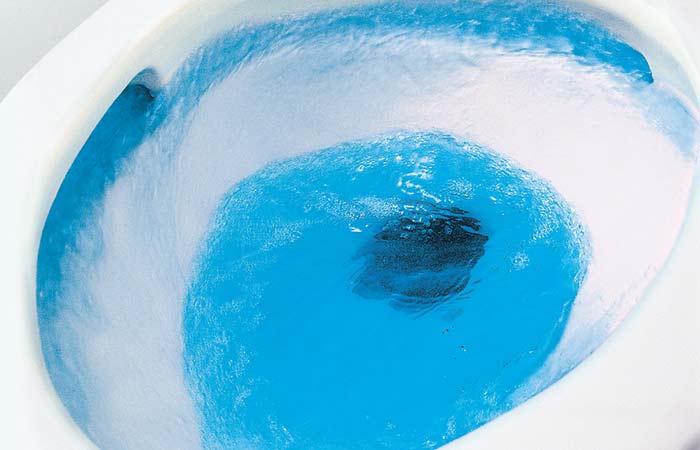
When flushed, the water swirls in the bowl like a cyclone thus effectively cleaning, rinsing and flushing the toilet. The cyclone is produced due to the direction in which water enters the bowl. This flush system is similar to the gravity flush system as it utilizes the force of gravity.
Pros
- It uses simple mechanism.
- It is powerful while using less water.
Cons
- It is hard to find replacement parts for this flush system.
Ballcock Flush System
This is one of the most common systems used in flushes. It has a ballcock with a plunger that fills the water tank of the toilet.
How it works
The ballcock is a floating ball that is attached to a rod. When the rod moves, it activates the plunger which then allows water to fill or empty the tank.
Pros
- It is easy to replace
- It flushes effectively.
Cons
- The ballcock system is prone to failure.
- It is very dependent on water and thus consumes a lot of water.
- The water may fail to shut off due to the shut off valve being set too high. This wastes a lot of water.
Flapper-valve Flush System
This flush system is similar to the ballcock system only that it uses a flapper instead of a ball. It consists of a toilet flush valve that is opened and closed by a plate hinged one side.
The mechanism is known as the flapper and is connected a chain hanging down from the flush handle lever.
The flapper is responsible for allowing and stopping water from flowing into the tank.
How it works
The flapper is filled with air and once the flush is triggered it floats. The flapper is then pulled out of its position by the chain. This enables water to flow from the tank to the bowl.
When the tank is emptied, the flapper is unable to float and go back to its position. Therefore, water is allowed to enter the tank.
Pros
- It is easy to maintain this flush system.
- It uses a simple mechanism.
- Flapper valve system is easier to replace and fix.
Cons
- The tank takes long to fill after a flush.
- The chain is prone to breaking.
Rear Toilet Flush System
A rear toilet system is also known as a backflush toilet because it discharges out the waste from the back. Most people prefer it for its toilet space convenience rather than its flushing. This system is common in areas where the toilet does not have a tank.
Pros
- They are more compact than floor flush toilets.
- This flush system occupies smaller bathroom space.
- It has more flushing power due to the pressure-assisted devices.
Cons
- It requires several readjustments and also maintenance.
Tornado Flush System
This flush system is Toto’s improved version of the double-cyclone flush system. Instead of two nozzles, this comes with three powerful nozzles that create a centrifugal, cyclonic rinsing action which reduces waste buildup and keeps the bowl cleaner.
It only uses 1.28 gallons of water per flush. It has a very effective and powerful flush. The design of the rim also helps to eliminate breeding grounds for germs.
Tower Style Flush System
This flush system is also known as the canister flush system. It is from the Kohler toilets brand. Tower style flush system has a canister mounted in the middle of the tank and connected to the flush handle.
This flush system lifts off wholly allowing water into the bowl from a 360 degrees angle. This enables the water to flow into the bowl faster thus creating a stronger flush.
Which is the Best Flush System?
For a flush system to be considered as the best, you need to consider how powerful the system is, how much water it uses and also how quickly it recovers. The gravity-forced system is the best due to a number of reasons, it is effective, quiet and uses less water.
Which is the Worst System?
The washdown flush system is probably the worst flush system because it is too noisy and is prone to odors due to the fact that the wastes are not fully submerged in water. Although newer flushdown units seem to save water, the old designs do not save on water. This makes it costly.